Change font size -A A +A ++A

Anil Kumar at Lalpahari-Jaynagar site at Lakhisarai
Our Bureau/
Ancient Lakhisarai which known as Krimila Adhisthana (developed urban center having political/religious importance) towered tall in medieval eastern India due to its arrogance.
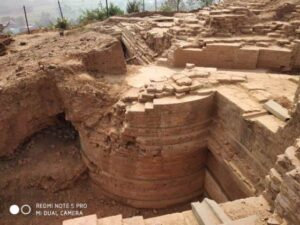
Lalpahari-Jaynagar Excavation site at Lakhisarai.
A developed urban settlement, Krimila remained famous in manufacturing in stone sculptures including Tibetan Buddhist sculptures. Krimila that spread across over more than 72 sq. km. had remained a verbal economic center with a cosmopolitan character.
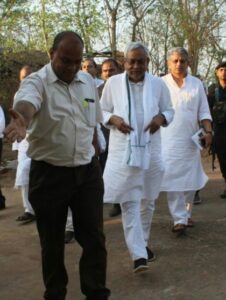
State chief minister, Nitish Kumar inspects Lalpahari excavation site.
Erstwhile Krimila flourished not only under active patronages of Pala kings and later during Sen dynasty rather there are evidences reveal that this forgotten Nagar of early medieval Eastern India also had the influences of Gupta dynasty, claimed Anil Kumar, a senior faculty of department of history at Visva Bharati University, Santiniketan. Kumar is also the supervisor of Lalpahari-Jaynagar excavation at Lakhisarai which recently concluded in the joint venture of department of ancient Indian history, culture and archaeology, Visva Bharati University, Santiniketan and Bihar heritage development society, department of art, culture and youth affairs of government of Bihar.

A sculpture discovered at Lakhisarai.
Kumar today delivered a webinar lecture on : “Krimila- a forgotten Nagar of the early medieval eastern India” which was organized by Bihar State Archives Directorate. Former director, Khuda Bakhsh library, Imtiyaz Ahmad and former HoD, department history, Patna University, Daisy Benerjee was conducting the webinar which was organized in the part of Bijay Kumar Thakur memorial lecture.
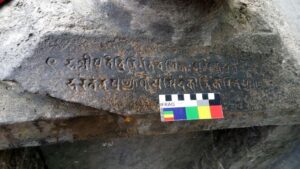
stone inscription at Lakhisarai.
The subject today reflected Bijay Kumar Thakur, a noted historian and a professor of history of Patna University who put many new ideas on urbanization in ancient India, in the context of Krimila’s ancient structure in terms of socio-economic and political/religious issues, Kumar vividly mentioned. In his opinion, it is not possible to give a clear picture on ancient urbanization on the basic of the then than kings/dynasty who ruled the areas or on the basic of nearby big town/city if any. “Local kings, feudatory chives had a vast role behind the development of any urban settlements like Krimila,” Kumar claimed while giving some inscriptions which specify the relation of some caste men in boosting up agrarian activities. Citing several inscriptions, Kumar focused the factors which might have helped Krimila to emerge as develop urban settlement at that periods.
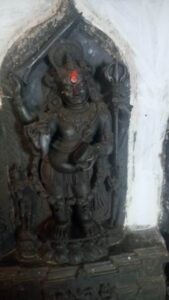
Old sculpture found at Lakhisarai.
Kumar narrated the events of three Varsavasa (staying indoor during rainy season) by Gautama Buddha at Venuvan or atop Chaliya Parbat at Lakhisarai district. “Located on the confluence of rivers Ganga, Haruhar and Kiul, Krimila was well assess on river ways and it’s the region that perhaps made it an important urban center at the time,” Kumar pointed out while giving the inscription that narrated Rampala (of Pala dynasty) conquered the areas from local king.

Earthen pots were also recovered from Lakhisarai.
Kumar gave a long list of sculptures which were discovered from different parts of Lakhisarai district time to time. “The sculptures of dancing Avalokiteshvara and Manjusree which earlier discovered during Lalpahari-Jaynagar excavation were rare in the world,” he claimed.
According to him at many sites in the district there were several sculptures were found in unfinished conditions. Apart from that, advanced mechanism for cutting the rocks/ stones in ancient times have been discovered at Lakhisarai. “Under such evidences we could say that Krimila had large scale sculpture manufacturing units which obviously helped it to stand tall in the eastern India as a developed and prosperous urban center,” Kumar claimed.

Cluster of unfinished sculptures at Lakhisarai.
“Krimila was pioneer in producing Tibetan Buddhist art particularly in sculpture form. Its brisk sculpture industry remained busy in supply the idols and other items made of stones to different places on river ways. Ganga which is flowing from its north direction, connects this place such as Noulagarh in north along with other parts while river Haruhar which come out from Falgu river, connected Gaya, Rajgir, Nalanda, and Nonghar. Similarly, river Kiul (it was called as Krimikala in ancient) connected Krimila with southern parts of this region. Secondly, not a single place in this region yet been identified like Krimila where such instances of sculpture manufacturing have founded,” Kumar pointed out. He claimed that such nomenclature of this ancient urban center had prompted Pala kings to setr up their political/religious headquarter at Krimila.
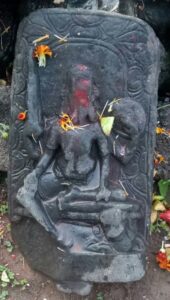
Another unfinished sculpture that found at Lakhisarai.
“Krimila was spread across vast areas and even today the finding of archaeological remains time to time from different places in Lakhisarai and number of mounds in the district that suggests it was an unique developed urban center,” Kumar pointed out.
He urged the state government to take proper care to conserve the recently concluded Lalpahari-Jaynagar excavation. “It’s very easy to initiate such excavations but very hard to maintain the post excavation steps. I could count several archaeological sites in Bihar on my fingers which destroyed just because of the post excavation negligence by the government. However, Bihar government has initiated for a modern museum at Lakhisarai to conserved our rich treasure troves,” Kumar pointed out.



Leave a Reply